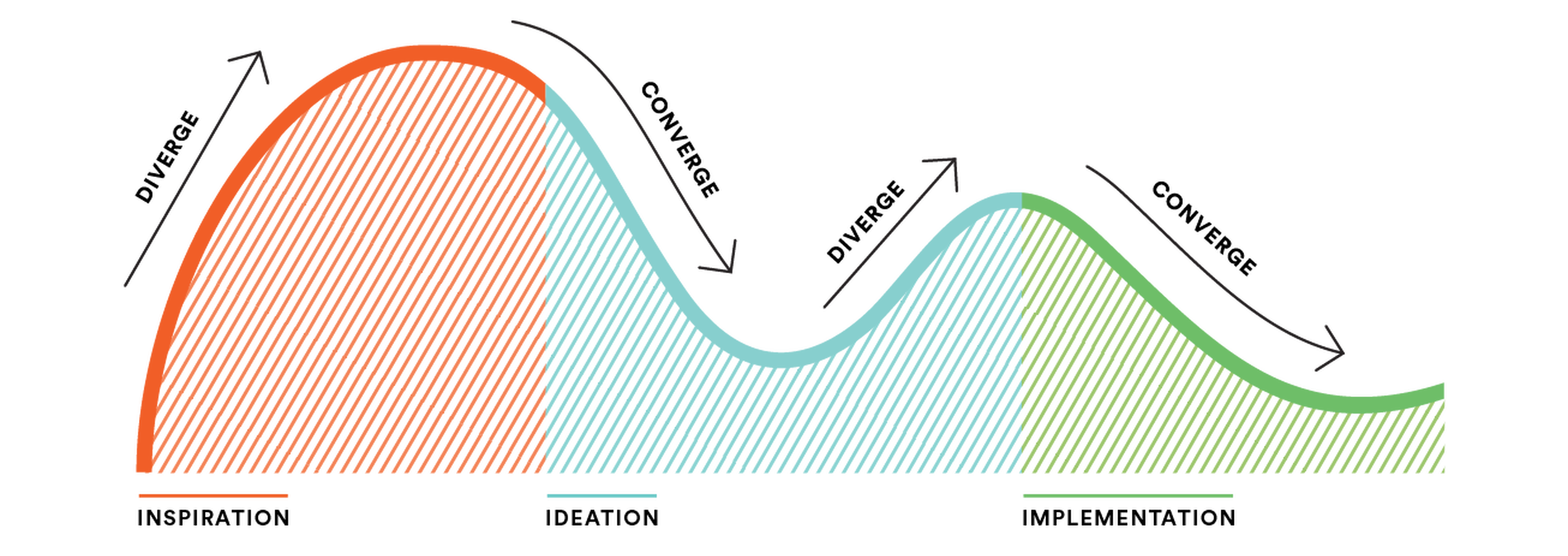Product Design Principles: Actions for Stronger Outcomes
These product design principles are my own. They are based on my career experience orienting teams around problem-solving and outcomes over solutions and feature building. While they are not exhaustive, they are my go-to list for more substantial outcomes, influence, and collaboration within and outside of my team. I have called upon these principles them time-and-time, again. I hope you find them helpful. Please share your feedback!
Go Outside with Customers
An essential part of customer-centricity is interaction with real customers through observation, asking questions, gaining input. This requires a departure from the desk, whiteboard, sticky notes of our office space to seek customer input in the place they interact with us. Really great product teams interface with customers weekly, yes weekly, for feedback. A few ways to approach customer input:
Conduct in-store intercepts
walk up to customers, ask for their feedback through a series of thoughtfully structured questions.
Launch unmoderated user feedback
Survey Monkey or User Testing are great tools for this
Schedule moderated customer conversations
tools like d-scout are a great ways to have conversations with customers. Also, in person interviews FTW!
Collaborate with your partners
Cross-functional teams are crucial to successful product development built around customers. No one person can hold all of the knowledge required to build a product that is desirable, viable, and feasible alone. Collaboration means involving peers and teams as partners in the work you seek to do and the outcome you strive to deliver. A few ways to approach Cross-Functional Collaboration:
Host co-building opportunities to ensure products are built with actual customer involvement. In this Inclusive design model, you are creating with, not for, a customer.
Ask for feedback often a whiteboard sketch, a mural board or a word document are all great low-fi ways to share emerging thoughts and capture feedback. These early ideas should feel editable and debatable.
Embrace “progress over perfection” and share your thoughts, ideas, and progress early on before you feel ready.
Take a step toward Human-Centered Design
<THIS PART NEEDS REWRITING>:
Start with five people
test ideas with five users or potential users of your product or service.
Run small tests, more often
aim to get the most learning you can, with the least effort or cost required
Keep test results informal
a word or excel doc is a perfect place to track learnings
Share broadly
Share results with the entire product team and with broader teams through customer data-sharing learning mechanisms
Most Loved Processes, Models and Methods
IDEO Design Thinking Process
Design thinking was part of my tool kit long before I knew it had a name and was formally accepted as a design process and even more widely, as a product discovery process. The ability to listen with your eyes and absorb meaningful context, insight, and inspiration is core to any designers being.
Synthesize observations into a refined number of ideas, is a key part of the design process. It has been great to give this process a more formalized name, assign it a process with authority, and bring colleagues along on the creative process roller coaster of creative trust aka; Design Thinking.
”Design thinking is a human-centered approach to innovation that draws from the designer’s toolkit to integrate the needs of people, the possibilities of technology, and the requirements for business success.” —TIM BROWN, EXECUTIVE CHAIR OF IDEO
Cagan’s Product Team Model
Over the course of my career I’ve served in just about every kind of team, role and organization. You will see a variety of these over on my resume. Through out all of these experiences, the common thread that aligns the best of them has been the context, conditions and direction of the team. Cagan refers this combination of context, conditions and direction as empowered product teams and once you have had the experience of operating this way, it will likely be challenging to go back to any other way of developing product, services or experiences.
“Empowered Product Teams are cross-functional (product, design and engineering); they are focused on and measured by outcomes (rather than output); and they are empowered to figure out the best way to solve the problems they’ve been asked to solve.
The purpose of a product team in this sense is to solve problems in ways our customers love, yet work for our business.” – MARTY CAGAN, FOUNDER OF SVPG, AUTHOR OF INSPIRED
GV’s Sprint Method
The Sprint book has been a true game changer for problem-solvers, everywhere. This productization of Design Thinking has helped many teams embrace exploration of the problem space, thanks to the authority and respect of GV. Discovery is not always easy, and the sprint book gives us a framework to pause solution building and take 5 to dig into meaningful problems to solve.
In my personal use and facilitation of the Design Sprint, I have found that the dedication required for a 5 day design sprint can be hard to come by in large organizations that aren’t fully bought into a product-led mindset. The design sprint kit community has helped influence change in some instances by providing a flexible array of recipes that and adaptable to a variety of contexts and conditions. This resource has served as an invaluable tool and has helped me influence product and rallying colleagues around the problem exploration space.
“Good ideas are hard to find. And even the best ideas face an uncertain path to real-world success. That’s true whether you’re running a startup, teaching a class, or working inside a large organization. Execution”
– JAKE KNAPP, GV SPRINT BOOK AUTHOR


